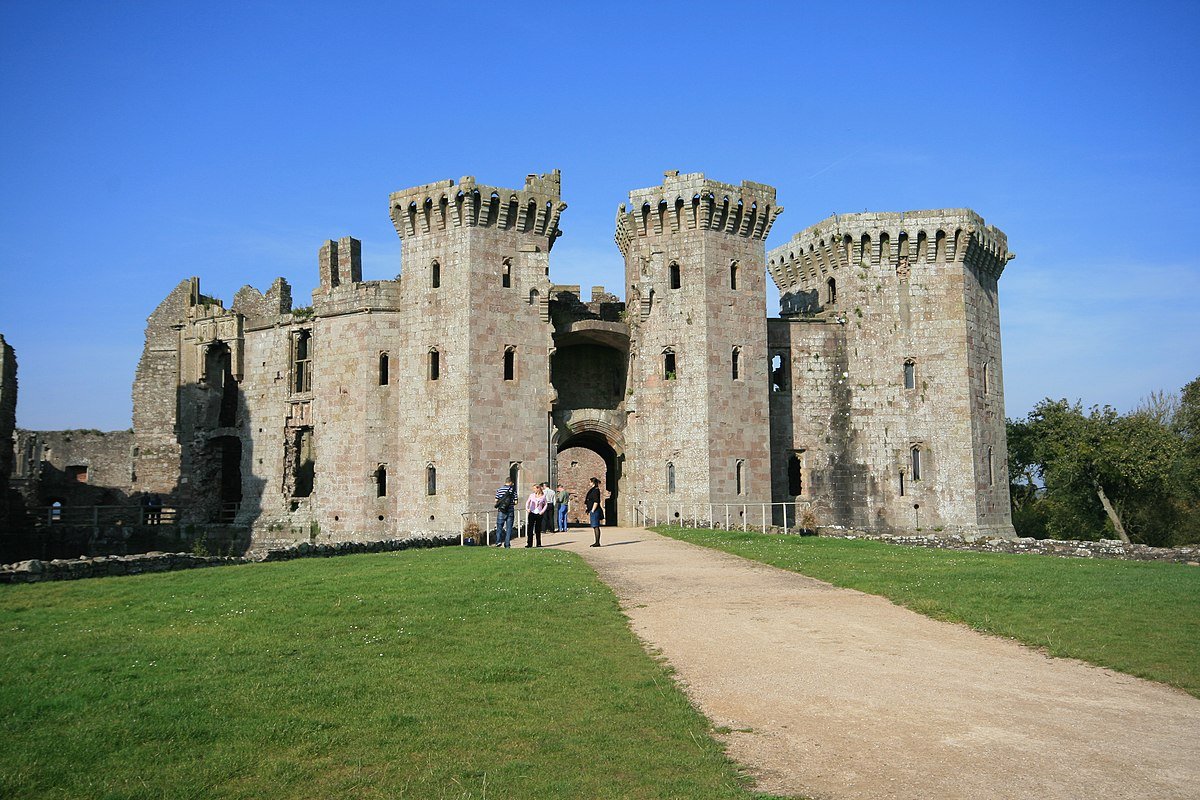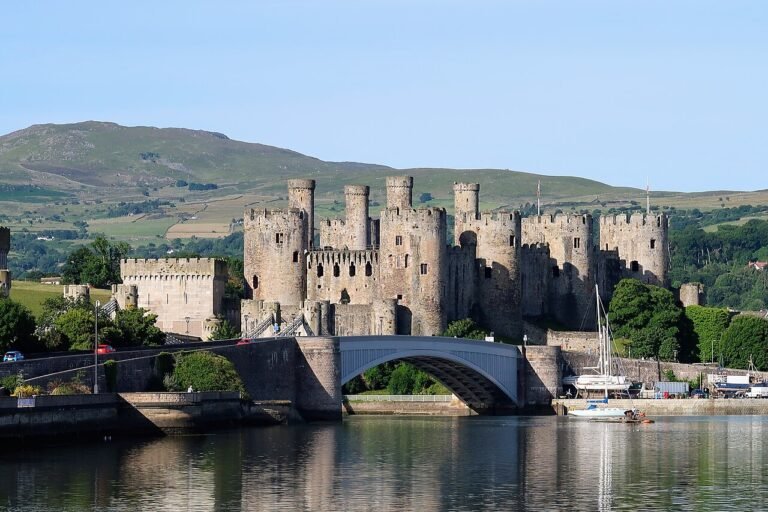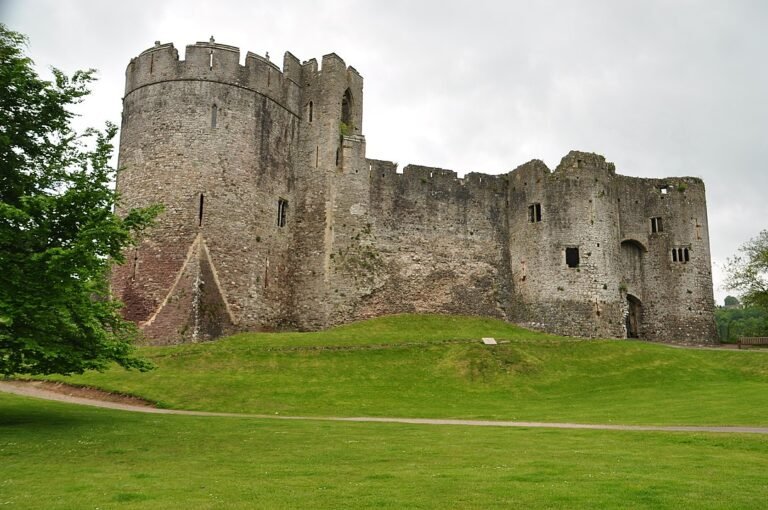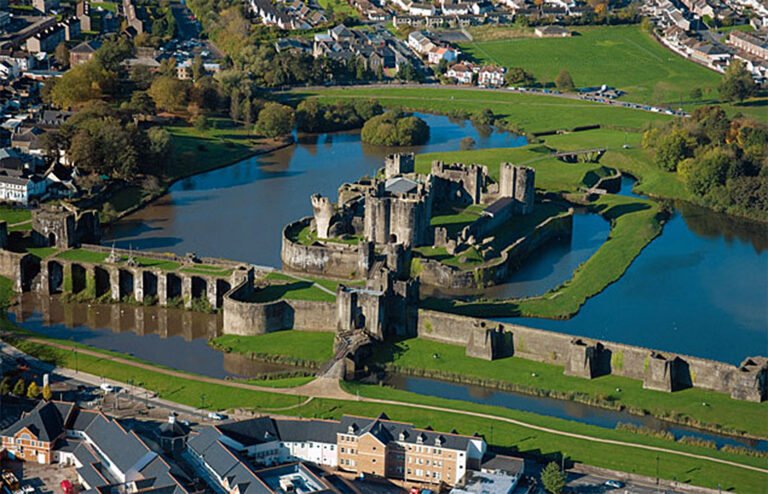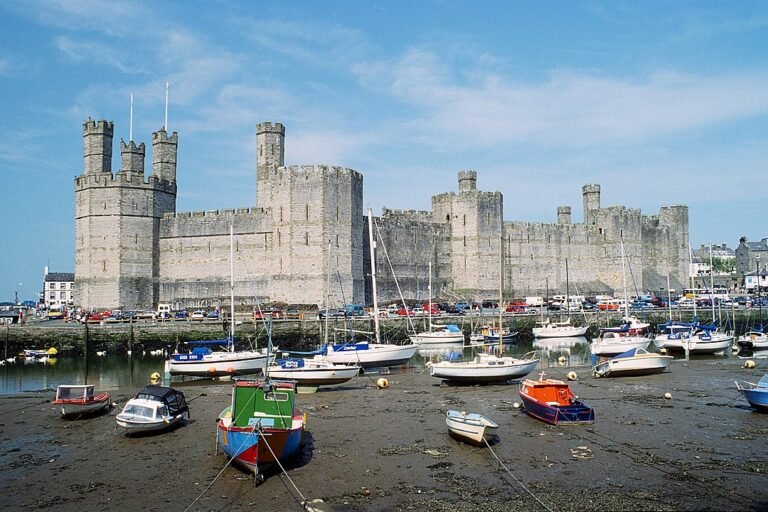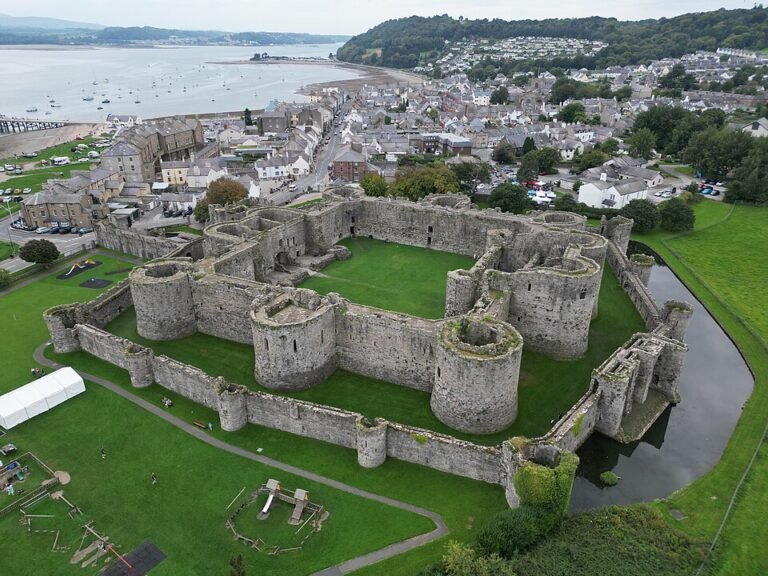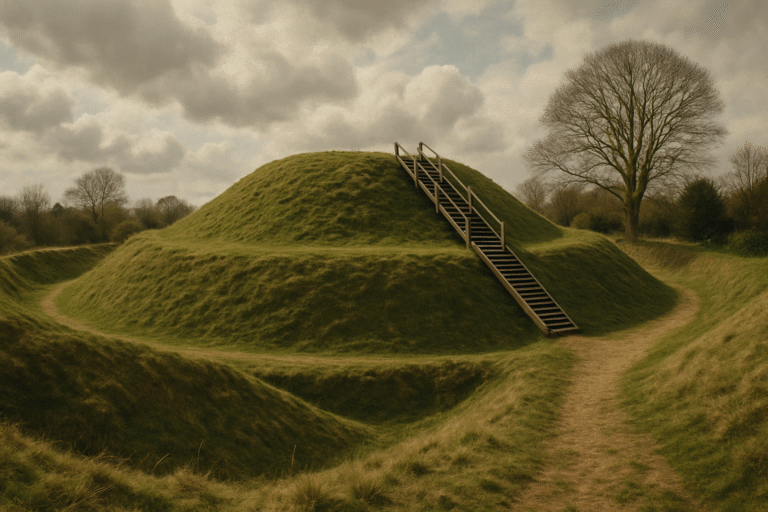Raglan Castle: A Majestic Fortress in the Welsh Countryside
Introduction to Raglan Castle
Raglan Castle, a striking blend of medieval might and Renaissance elegance, stands proudly in the heart of Monmouthshire, Wales. As one of the last true castles built in Britain, its unique combination of military strength and aristocratic grandeur has captured the imagination of visitors for centuries. Whether you’re a family seeking a fun day out, a couple exploring Welsh heritage, or a solo traveller diving into UK history, Raglan Castle is an unforgettable stop on your journey.
History of Raglan Castle
Construction of Raglan Castle began in the 1430s under Sir William ap Thomas, a prominent Welsh nobleman. His son, William Herbert, expanded the castle into a lavish home and military stronghold. By the late 15th century, Raglan was a symbol of power and sophistication, boasting hexagonal towers, a great gatehouse, and richly decorated halls.
The castle played a significant role during the English Civil War. In 1646, it endured an eleven-week siege by Parliamentary forces. Despite the defenders’ efforts, the castle fell, and its fortifications were largely dismantled to prevent future use. Today, the remains offer a fascinating glimpse into medieval life and the tumultuous history of the period.
Raglan Castle: Architectural Features
Unlike many purely defensive castles, Raglan blends grandeur with utility. Key highlights include:
- Great Tower (Keep): An iconic hexagonal tower, once surrounded by a moat, offering panoramic views of the countryside.
- Gatehouse: A powerful entryway that combines defence with striking design elements.
- Fountain Court: A refined inner courtyard featuring Renaissance-style embellishments.
- State Apartments: Once lavish residences with ornate windows and high ceilings, now evocative ruins.
The mixture of Gothic and Renaissance elements reflects the ambition of its builders, who aimed to impress both allies and enemies.
Raglan Castle Visitor Information
- Location: Raglan, Monmouthshire, NP15 2BT
- Managed by: Cadw (Welsh Government’s historic environment service)
- Opening Hours: 10:00 AM – 5:00 PM (last entry 4:30 PM), open daily
- Admission: Adults £10.50, Children (5–17) £7.30, Family tickets available
- Facilities: Toilets, gift shop, information panels; limited refreshments onsite
Getting There
- By Car: Located just off the A40, with free on-site parking
- By Public Transport: Nearest train station: Abergavenny (10 miles); buses available from Monmouth and Abergavenny
- Accessibility: Uneven terrain and stairs may pose challenges; partial wheelchair access
Best Time to Visit
Spring and summer offer the best weather and full access to the castle grounds, with lush surroundings perfect for picnicking. Autumn brings golden foliage, while winter offers a stark, moody atmosphere ideal for photographers.
Suggested Itineraries
1. Day Trip from Cardiff
- Morning: Depart Cardiff (1 hour by car)
- Midday: Tour Raglan Castle (allow 2–3 hours)
- Afternoon: Lunch in Usk or Monmouth; visit Tintern Abbey
- Evening: Return to Cardiff
2. Weekend Heritage Getaway
- Day 1: Explore Raglan Castle and enjoy a countryside walk
- Stay overnight in Abergavenny or Monmouth
- Day 2: Visit Chepstow Castle or the Wye Valley
Nearby Attractions
- Tintern Abbey: Romantic Gothic ruins nestled in the Wye Valley
- Usk Castle: A quieter, lesser-known ruin with beautiful gardens
- Monmouth: A charming market town with Roman and medieval roots
Where to Eat and Stay
Options range from cosy B&Bs to elegant country inns:
- The Beaufort, Raglan: Traditional inn with hearty fare
- The Bell at Skenfrith: Boutique riverside inn with fine dining
- Glen-Yr-Afon House Hotel: Family-friendly accommodation in Usk
Special Events and Experiences
Raglan Castle hosts seasonal reenactments, medieval fairs, and educational events. Summer often brings open-air theatre and living history demonstrations, perfect for families. Check the Cadw website for event listings.
Exploring the UK’s Castle Trail
Raglan Castle is a highlight on the broader UK castle trail. Similar destinations include:
- Caerphilly Castle: Massive water-defended fortress in South Wales
- Warwick Castle: Interactive exhibits and family-friendly shows in England
- Edinburgh Castle: Scotland’s iconic hilltop stronghold
These sites offer a deeper understanding of the UK’s feudal, royal, and architectural history, appealing to all types of visitors.
FAQs about Raglan Castle
When was Raglan Castle built?
Raglan Castle was built in the early 15th century, with construction starting around 1435 under Sir William ap Thomas. It was later expanded by his son, William Herbert, who became the first Earl of Pembroke.
Who owned Raglan Castle?
The castle was originally owned by the Herbert family before passing to the Somerset family, who held it for centuries. Today, it is managed by Cadw, the Welsh Government’s historic environment service.
Why is Raglan Castle famous?
Raglan Castle is renowned for its unique Renaissance architecture and its blend of medieval fortress features with more elegant, palatial elements. It played a significant role during the English Civil War and was one of the last Royalist strongholds in Wales.
What happened to Raglan Castle during the English Civil War?
In 1646, after a lengthy siege by Parliamentarian forces, Raglan Castle was surrendered and partially demolished (“slighted”) to prevent further use as a military stronghold.
Is Raglan Castle open to the public?
Yes, Raglan Castle is open year-round to visitors. It offers guided tours, seasonal events, and scenic views of the surrounding countryside.
How long does it take to visit Raglan Castle?
Most visitors spend about 1 to 2 hours exploring the castle, though you can take longer if you enjoy photography, history interpretation, or the walking trails around the site.
Is there parking at Raglan Castle?
Yes, there is free parking available near the entrance of the castle for visitors.
Are dogs allowed at Raglan Castle?
Yes, dogs on leads are welcome in the castle grounds, making it a popular stop for families and pet owners.
